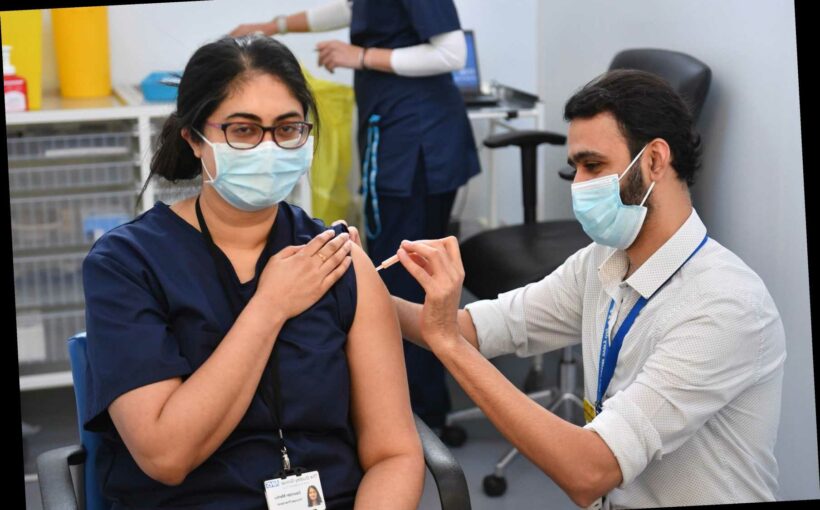BRITAIN'S coronavirus vaccination programme is in full swing and so far over 6.5 million people have received a jab.
One jab, created by Oxford University and AstraZeneca, has been hailed as a triumph for British science.
😷 Read our coronavirus live blog for the latest news & updates
The government has a target to vaccinate 15 million people in the four most at-risk groups by mid-February.
Brits started receiving the “game-changing” Oxford/AstraZeneca jab on January 4 – with millions more vaccinations expected in the first half of 2021.
Here we take a closer look at the potentially revolutionary jab.
Where is the Oxford AstraZeneca Covid vaccine made?
Experts have hailed the Oxford vaccine as a route out of the pandemic.
The Oxford-Astrazeneca vaccine is mainly being produced in the UK, though other sites across Europe are being used to manufacture the first doses of the jab.
Ian McCubbin, manufacturing lead for the UK's Vaccine Taskforce said while the initial supply had come from the Netherlands and Germany after this the supply chain would be completely UK based.
The jab takes a different approach to the Pfizer vaccine, and is made from a weakened version of the adenovirus (the common cold) from chimpanzees.
After being injected into a patient, the vaccine prompts the immune system to develop antibodies which fight Covid-19.
Who will get the Oxford AstraZeneca Covid vaccine first?
Brian Pinker, 82, became the first patient to receive the jab at Oxford University Hospital at 7.30am on January 4.
The Oxford jab is the second vaccine to be rolled out in the UK, after the Pfizer/BioNTech vaccine was first given to 91-year-old Margaret Keenan on December 8, 2020.
Mass vaccination sites across the country have been set up to help get the jabs into the arms of as many Brits as possible.
GP surgeries and pharmacies will also be administering the jab.
The independent Joint Committee on Vaccination and Immunology – the JCVI – has drawn up a list of nine priority groups who will receive the vaccine first.
The first group to be vaccinated is the over 80s and care home residents, as well as front-line health and care staff.
Last night Health Secretary Matt Hancock said over 70 per cent of people in the over 80s had already been vaccinated.
The jab will then be rolled out to other groups including young adults with underlying health conditions and over-50s.
Brits cannot choose which vaccine they will receive.
How many vaccines will I need?
The Medicine and Health Regulatory Agency (MHRA) has approved a two-dose regimen for the Oxford-Astrazeneca vaccine.
Patients will receive their second dose four to twelve weeks after the first, as the government shifts its focus to giving Brits the first dose urgently.
We do not yet know how long protection from the vaccines will last.
Brits may need to go for annual vaccinations, as with the flu, but there is no further evidence yet on the duration of immunity.
How many doses of the vaccine do we have?
Britain has ordered 100 million doses of the new vaccine, enough for 50 million people.
It can be stored in a fridge making it easier to get into care homes and GP surgeries.
Along with the 40 million doses of the Pfizer treatment, Britain will have enough to protect the entire population.
Boris Johnson has pledged to vaccinate tens of millions within three months.
How effective is the vaccine?
The Oxford-AstraZeneca vaccine has been shown to be completely safe, and can provoke an immune response in people of all ages, including the elderly.
Participants in clinical trials were given different dosing regimens, with some receiving two full doses and others a half dose followed by a full dose.
Two full doses of the jab were found to be 62 per cent effective.
While this is lower than the 92 per cent efficacy reported by Pfizer, it is still far above the best flu jab, which is around 50 percent effective.
Source: Read Full Article






